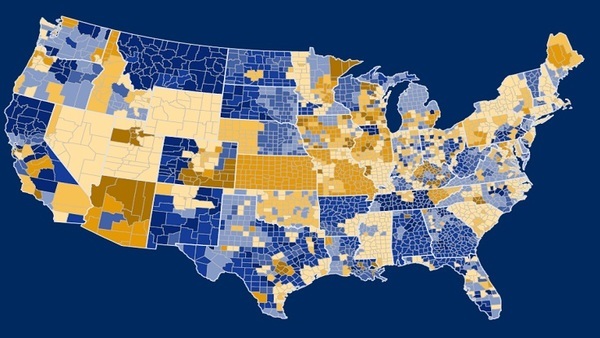This year started off with a lot of promises of Big Changes–a new president and GOP-controlled Senate and House offered up a lofty to-do list and the zeal to get it done. The "repeal and replace" of Obamacare was a top issue in January… and still limping along in a battered-and-bruised state in December–Obamacare itself was in something of a similar state. The GOP was faced with a health care policy that just wouldn't die, despite their best efforts.
The ACA wasn't the only thing that thwarted death this year. The insurance broker industry's favorite bad-boy, Zenefits navigated government fines, company restructuring, a slew of bad PR and more, announcing a new business model. And natural disasters took their toll on areas across the country, breathing new life into Employee Assistance Plans, a benefit teetering on the brink of acceptance.
Here's our look at six things that rose from their deathbeds in 2017:
Recommended For You

Zenefits
The startup entered the insurance industry with a splash but was in the throes of a swan dive at the beginning of the year. A reshuffling of CEOs, regulatory fines and mass layoffs seemed to spell doom for Zenefits, but in September, the company announced a new business model: software for brokers.
Whether this will be a saving grace for the scandal-ridden startup is yet to be seen…
"Repeal and replace"
This was one of the key components of President Trump's campaign, who promised to act on the issue "immediately" or at least within the first 100 days of office. No one could argue that the GOP didn't give it their all, first with the AHCA, the "skinny" bill, and Graham-Cassidy, to name a few.
After the Sept. 30 deadline passed, the effort was marked down as a casualty… or so we thought. "Repeal and replace" eventually became simply "Repeal" in July, but by October, the goal could be more accurately described as, "dismantle," with President Trump taking matters into his own hands and signing a series of executive orders to roll back key provisions of the ACA, and then the unexpected inclusion of the repeal of the individual mandate in December's tax reform bill.
State ACA exchanges
"Repeal and replace" was Plan A for the Trump administration, with outright sabotage a key driver, or at least a solid Plan B. Amid the uncertainty and upheaval that was the first year of the Trump administration, more and more insurers tried to distance themselves from the ACA exchanges. Plan options dwindled and prices soared, leading many to fear the end of the ACA exchange. Meanwhile, mixed messages from the government combined with a cut in funding and reduced enrollment window further spelled doom for the marketplace.
Despite these nails in the coffin, state exchanges proved alive and well during the first week of open enrollment, and while overall signups lagged compared to 2017, the final turnout defied expectations.

Employee Assistance Programs
Employee assistance programs (EAPs) and advocacy services have been around for years, but they've never gained real momentum as a must-have benefit. This year saw some unfortunate events that brought EAPs into the spotlight, including hurricanes and other natural disasters, which are only expected to increase in coming years.
On a brighter note, greater focus on employee productivity, engagement and retention caused by increased competition and low unemployment rates have further illuminated the potential payoff of EAPs.
Retirees
Yes, we went there, and as unpleasant as the suggestion may seem, it's not inaccurate to include them in a list of things near death springing back to life. More and more baby boomers are coming out of retirement or staying in the workforce longer. Meanwhile, the average life expectancy is decreasing, leaving seniors less time to enjoy their retirement–or the good health they've spent their retirement dollars to maintain.

The fiduciary rule
Another Obama-era regulation subject to the "repeal and replace" mantra, this is one issue that just refuses to die, despite the best efforts of politicians. Critics worried about new oversight issues and documentation requirements, as well as a long list of requirements and exemptions that muddied the implementation. One provision of the rule particularly vexing to retirement advisors is a "best interest" provision designed to protect investors in qualified retirement accounts from conflicting advice. While some measures of the rule did take effect in June, other parts were subject to one delay after another. In November, the rule was granted another 18-month stay of execution implementation for full implementation, originally scheduled for January 1, 2018.
© 2025 ALM Global, LLC, All Rights Reserved. Request academic re-use from www.copyright.com. All other uses, submit a request to [email protected]. For more information visit Asset & Logo Licensing.











